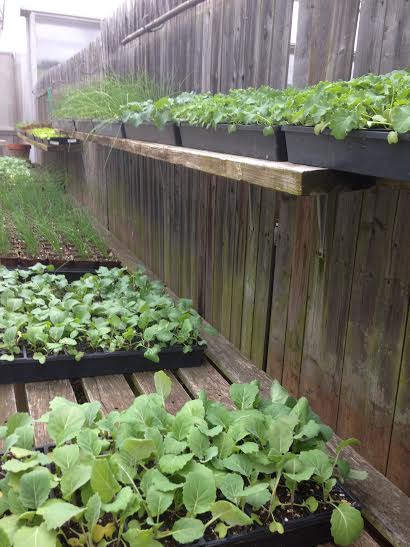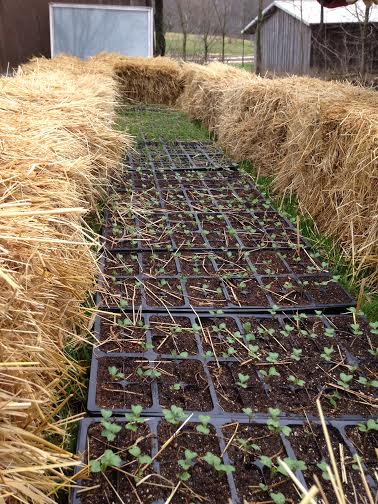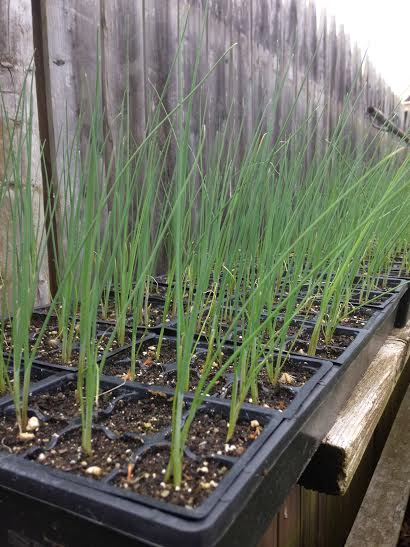Check in weekly, on Wednesdays, to read our new post on gardening, harvesting, and making use of that fine, extra-local produce! We’ll share tips and techniques, gleaned from our urban farms and gardens. Email info@growpittsburgh.org with any topics you’d like us to cover.
Seedlings grown indoors or even in a greenhouse require a gradual process of getting used to the outdoors before they can successfully make their final home there. Inside, the seedlings are babied with consistent temperatures and water whenever they need it as well as a lack of insect pest and disease pressure. Outdoors, however, threats abound, from wind pushing against tiny stems and root systems to drying out, harsh sunlight, insects, and disease.
The best way to prepare seedlings for living in the great outdoors is by introducing them gradually to the various pressures of living outside. This process is often called hardening off. Make sure your seedlings are old enough to plant outside; the ideal time to harden transplants is when their roots begin poking out of drainage holes in the pots (before the roots begin to spiral). Also, be sure that it is the proper growing season for your transplants. For instance, don’t plant warm-season crops like tomatoes or squash outside until after the last expected frost date of the spring.

A variety of seedlings hardening off at the Frick greenhouse. These cool-season crops are hardy, but fabric row cover is still pulled over the trays during extra cold nights.
Follow these steps to help get your seedlings off on the right foot:
- Set your seedlings outside in an area protected from wind and direct sun. Start with just a few hours a day, and over the course of a week, increase the amount of time until the plants are exposed to the outside all day.
- At the beginning of the week, keep the plants well-watered. In the last few days of the week, begin allowing your plants to dry slightly (never to the point of wilting) before watering.
- Keep a close eye on your seedlings, especially the first few days. If they look stressed, bring them inside. If the weather is very hot, very cold, or if there is heavy precipitation, limit their time outside, even if it means less outdoor time than the day before.
- Bring your seedlings inside at night for the first few days. Then, begin leaving them in a protected area outside overnight, assuming the weather is not too extreme.
- After the first few days outside, allow the plants small amounts of direct sunlight. Gradually increase this amount through the end of the week.

These seedlings are protected by insulating straw bales. Windows are placed over the seedlings at night and fabric row cover is used on days of full sun.
By the end of a week or so, your seedlings’ stems should be looking strong. They will probably be growing some new, tough looking leaves. Their roots should be starting to just poke out of the drainage holes in their pots. When the seedlings have been exposed all day and all night to the elements, they are ready to plant.
A few notes:
- Seedlings from nurseries and home improvement stores have generally been hardened off already. If you are not sure, just ask.
- Another option for hardening off is to create a protected area with an insulating material like straw bales (as in the photo above). Seedlings in the hardening-off area can be covered at night and during cool periods with row cover or windowpanes. Row cover can also be used to diffuse direct sunlight during the day.
- This is the third article in a three-part series on growing seedlings at home. For more information on growing seedlings at home, check out our Containers and Soil and Lights and Heat seedling articles.

